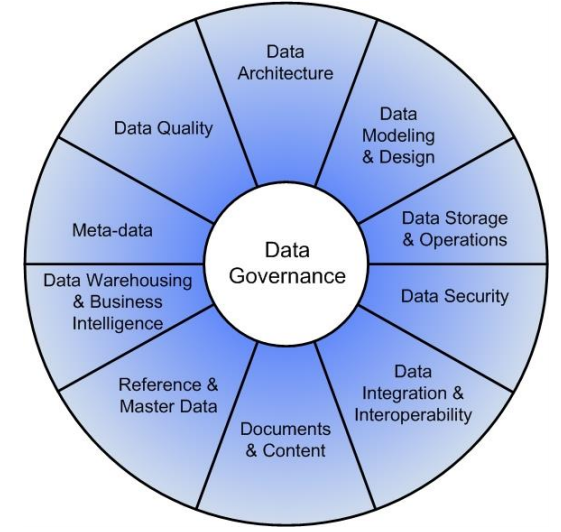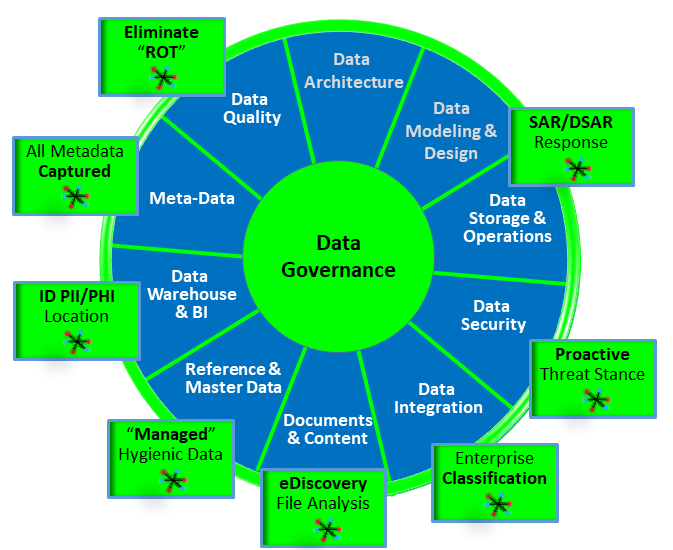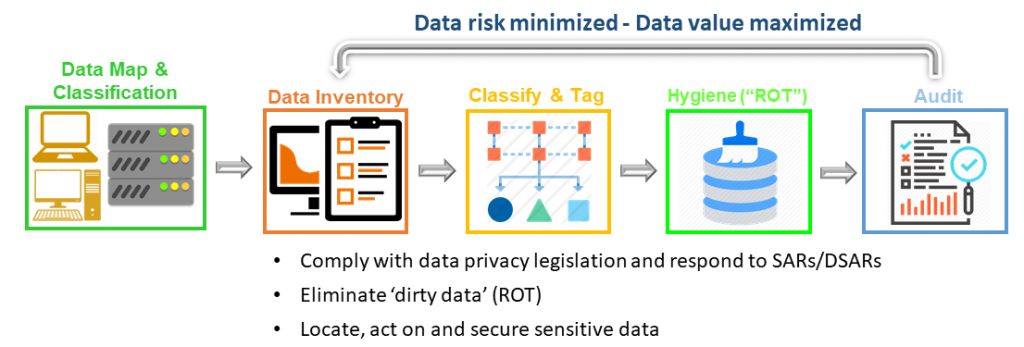Data Governance Risk & Unstructured Data

“Data governance risk and unstructured data” is inspired by Julie Talbot-Hubbard’s post in “NACD Board Talk.” As Ms. Talbot-Hubbard notes, “The initial business cases for adopting data governance as a standard operational protocol includes a growing information overload problem and the realization that there is both opportunity and risk with the exponential growth in data volume.” https://blog.nacdonline.org/posts/data-governance-risk
Data Governance is…
the set of people, processes, and technologies to manage data as a corporate asset. The standard methodology of data governance ensures a company’s data is always available, secured, and providing value to the business throughout its life cycle.

Around 2005, data governance was defined as “data in databases that we control.” This definition has changed thanks to smart phones, cloud computing, and the Internet of Things, as well as the need to be able to manage unstructured data—another term for information that is not held in databases. All of these factors make data governance more difficult because of the increased volume and variety of data, and the velocity at which data is generated, stored, and mined for insight.
(DAMA-DMBOK2 Guide Knowledge Area Wheel)
Data Governance Changes With the Times…
The objective of data governance changes as enterprise security risk becomes a tier-1 board concern and data security and compliance emerge as two of the greatest sources of this risk for companies. Ms. Talbot-Hubbard cites two (2) areas of focus to facilitate change:
- Govern access to data as an enterprise competency. Key business leaders and organizational stakeholders must drive data governance policy and practices and legal leaders must drive adoption of data risk initiatives.
- IAM programs must become strategic enablers – enterprise initiatives – for the entire business as the heart of enterprise data governance.
…but Unstructured Data Passed Over
Julie briefly mentions unstructured data but does not address that as one of the most over-looked inhibitors to Data Governance. Unstructured data is 80% of all data, 70% of which is “ROT,” and unstructured data harbors PII. And, it doubles every 19 months (Gartner). Robert Smallwood served as Managing Director at the Institute for Information Governance. Mr. Smallwood states, “good business managers prefer ‘efficient’ data. They would prefer to reduce costs and legal liabilities by getting rid of information that no longer has business value. 69% percent of stored data is junk.”
Mitigating Data Governance Risk & Unstructured Data

Heureka, Inc. singularly focuses on the identification, remediation and disposition of unstructured data. Heureka enables data governance compliance as shown in the model here. Data privacy compliance, mitigating breach of data, and overall data efficiency depend on disciplined processes and tools to enable that process.
We appreciate the opportunity to give you a tour. Please schedule a demo.

data governance risk and unstructured data
